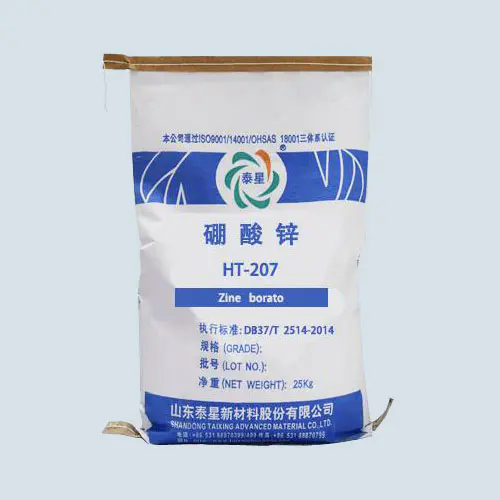How to Use Zinc Borate Flame Retardant Effectively
2025-02-11
Step 1: Choosing the Right Zinc Borate Grade
Zinc borate comes in different grades depending on particle size, hydration level, and thermal decomposition temperature. Some common types include:
- ZB-2335: The most widely used grade, suitable for plastics, coatings, and rubber.
- Anhydrous Zinc Borate: Best for high-temperature applications like ceramics and glass.
Step 2: Determining the Proper Dosage
The amount of zinc borate added to a material depends on the type of polymer and required fire resistance level. General guidelines include:
- 3-15% by weight in plastics and rubber.
- Up to 25% in wood composites.
- 1-5% in coatings and paints.
Step 3: Combining with Other Flame Retardants
Zinc borate works best when combined with other flame retardants:
- With Aluminum Hydroxide (ATH) or Magnesium Hydroxide (MDH) → Improves overall fire resistance.
- With Antimony Trioxide → Enhances performance in PVC and rubber.
- With Phosphorous-Based Retardants → Used in wood and coatings.
Step 4: Processing and Incorporation
1. Mixing: Ensure even dispersion in the polymer matrix using high-shear mixing or compounding techniques.
2. Processing Temperature Control: Keep temperatures below 290°C to prevent premature decomposition.
3. Surface Treatment (If Needed): Use silane coupling agents to improve compatibility in polymer systems.
Step 5: Testing and Compliance
To meet safety regulations, products containing zinc borate should be tested according to:
- UL 94 (Flammability Standard for Plastics)
- ASTM E84 (Surface Burning Characteristics of Building Materials)
- RoHS & REACH Compliance (For environmental safety)
Zinc borate is a versatile, halogen-free flame retardant that improves fire resistance while reducing smoke and toxic emissions. By selecting the right grade, dosage, and combination with other additives, manufacturers can achieve optimal fire protection across various materials.



